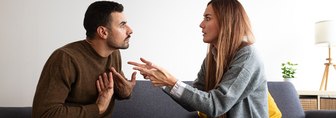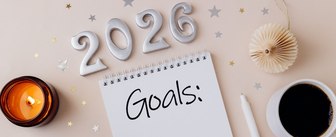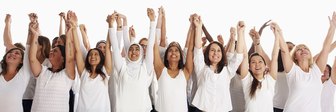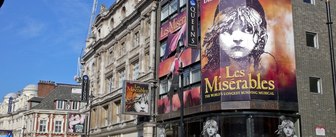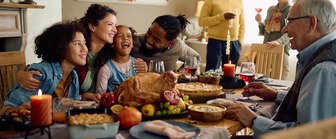One-quarter (25%) of people identified as something other than completely heterosexual, compared to 20% of people in 2015.
Fewer Americans today identify as completely heterosexual, according to new data from YouGov Omnibus. People were asked to place themselves on the Kinsey scale, where 0 is completely heterosexual and 6 is completely homosexual. The scale was invented by Alfred Kinsey in 1948 as a tool to study human sexuality. The original study used several methods to determine where someone would fall on the spectrum, but YouGov simply asked people to place themselves on the scale.
The same series of questions was asked of YouGov panelists in August 2015 and June 2018. The results suggest that in 2018, more people say they’re not completely heterosexual. One-quarter (25%) of people identified as something other than completely heterosexual, compared to 20% of people in 2015.
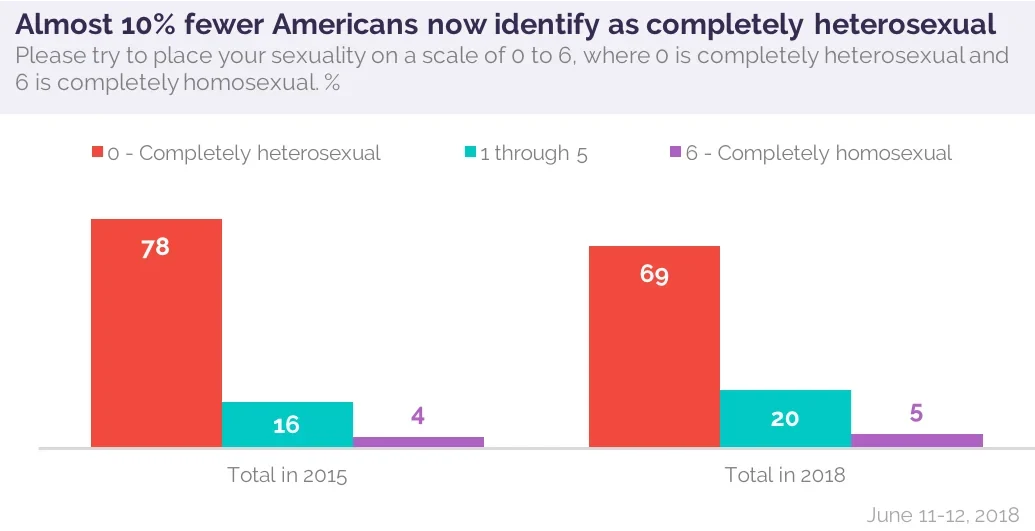
Just over two-thirds (69%) of Americans identified as “completely heterosexual” in the 2018 survey, a drop from 78% of people who identified as completely heterosexual in the 2015 survey. About half of people in the 18-to-34 age range (55%) said they were completely heterosexual, compared to 67% of 35-54 year olds, and 84% of people aged 55 and up.
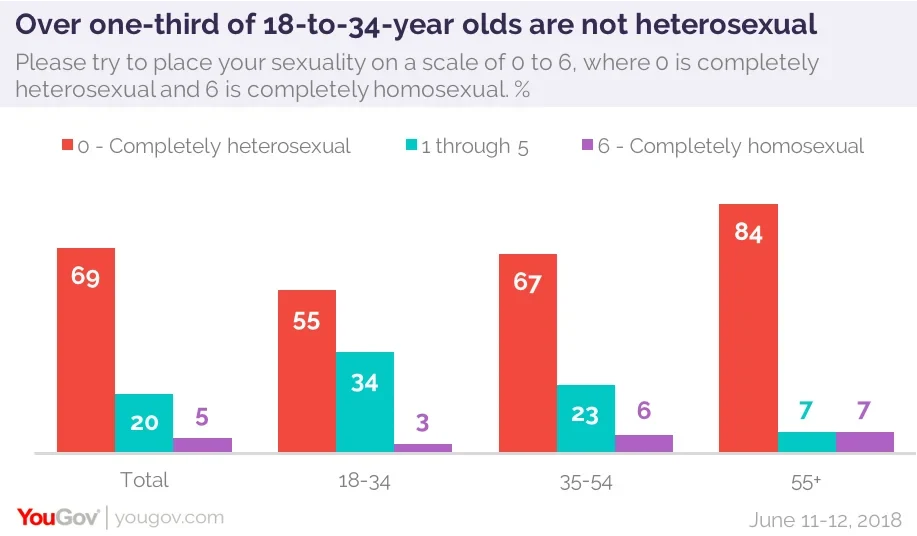
But despite what seems like an increase in sexual fluidity, less than half (40%) of people said that the statement “Sexuality is a scale – it is possible to be somewhere near the middle” came closest to their view. A nearly-equal amount (42%) said that the statement “There is no middle ground – you are either heterosexual or you are not” came closer to their view.
Women and men were equally likely (18%) to report that they’d had a sexual experience with someone of the same sex. In 2015, one out of every five women (20%) reported having a same-sex experience, compared to 15% of men at the time.
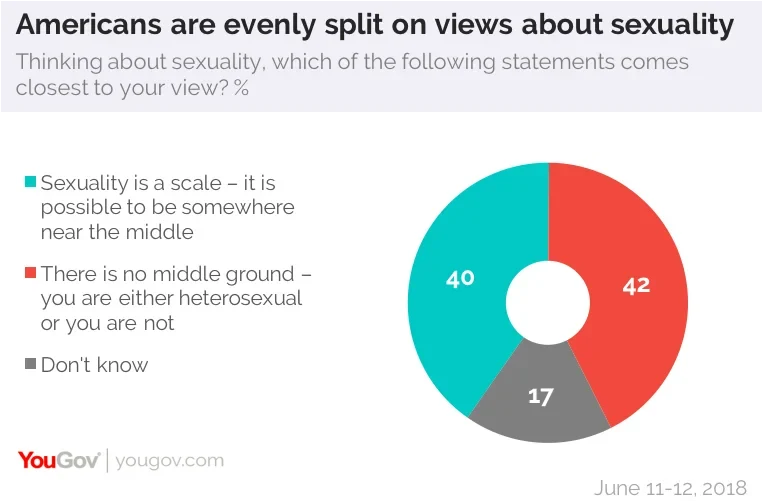
When asked about the possibility of being in a same-sex relationship, women (15%) were almost twice as likely as men (8%) to respond “definitely” or “maybe, if I really liked them.” Women also tended to be more open to the idea of a same-sex sexual experience, with 17% saying they thought it could happen, compared to 7% of men.
Image: Getty


